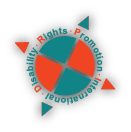Section 4: Gender and Disability
The 2001 Census estimates that there are over 9 million women with disabilities in India constituting 3.5% of the population. Some researches estimate that there are over 35 million women with disabilities in India (Bacquer and Sharma 1997)22. Others put the figure at 20 million, 98% of them are illiterate: less than 1% can avail healthcare and rehabilitation services (Action Aid 2003 15). But these statistics are only the tip of the iceberg when it comes to gauging the level of neglect, isolation stigma and deprivation that characterise their lives. The majority of women with disabilities in India suffer the triple discrimination of being female, being disabled and being poor. Indeed not only are they a socially invisible category but their plight is worse than both men with disabilities and other non-disabled women. Being powerless, isolated and anonymous women with disabilities are extremely vulnerable to abuse and violence.
While no specific disability law mentions women as a category that requires special attention, the XI Plan observes that
Women with disabilities . . . are considered a financial burden and social liability by their families; they are denied opportunities movement outside the home and access to education; they are viewed as asexual, helpless and dependant . . . they [are] isolated and neglected with no home of a normal life.
It goes on to state that the specific concerns of women with disabilities have found a place neither in the government policies and programmes nor the voluntary sector,
a situation which was only begun to be rectified by the women's movement in the Beijing declaration of 1995.
Thus the XI Plan for the first time considers the situation of women with disabilities in all its complexity, focusing on the need for an intersectional understanding of discrimination in order for policy to be effective. The vulnerability of poor women to triple discrimination - poverty, gender and disability - marks this document out in significant ways. Alongside this, the document deliberates on the ways in which the gender-based division of labour places women with disabilities at an added disadvantage both at the family and community level. The national policy for persons of disability addresses these concerns as well, though not as comprehensively as the plan document does. The plan document provides a framework for future government and non-government action to strengthen the position of women with disabilities.
However the government is now serious about addressing the issue vis-a-vis women as seen in its Report of the Working Group on Empowerment of Women for the XI Plan Ministry of Women and Child Development Government of India 23.
It recommends among other things that women with disabilities should be included not only as beneficiaries from gender equity but also as fieldworker and project facilitators, survey designers and field investigators in projects with disability components to enhance their visibility in highly positive roles and challenge negative attitudes that reduce them to objects of pity and helplessness.
In an important statement, it says there should also be a separate wing for women with disabilities in the Disability Commissioners office. Women with disabilities should be represented on the Central and state co-ordination and executive Committees.
